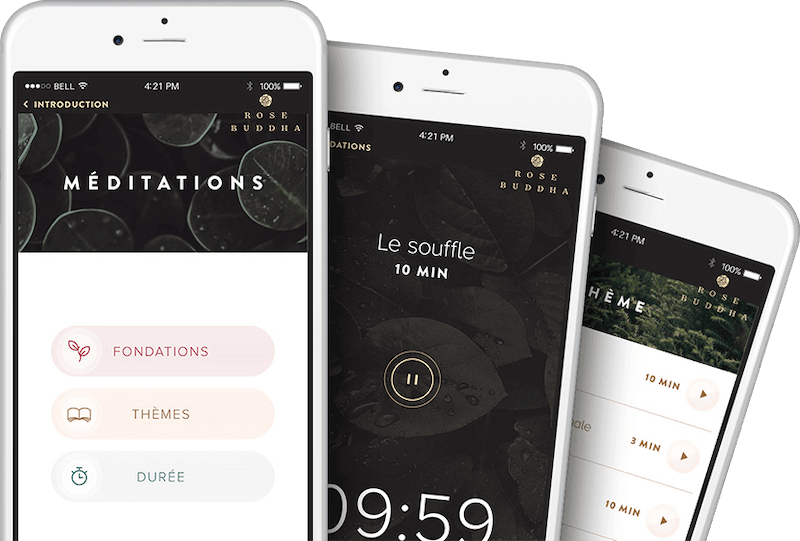The 5 most common questions we get!
We are fortunate to have engaged and curious customers. You like to know everything about the history, design and manufacture of your favorite Rose Buddha products?
We have selected 5 themes for which we are (very) often questioned and for good reason! Rose Buddha is a great story and we love to share it with you.
1-How is it possible to go from a water bottle to yoga leggings?
Virgin polyester is a product derived from petroleum, a very polluting resource requiring a large amount of energy to produce. But recycled polyester, meanwhile, is a pro-environmental option for making clothing. Composed of recycled plastic bottles, it's used to make Rose Buddha yoga leggings (10-15 bottles per leggings). These bottles are shredded into tiny particles (like cotton candy). The resulting fiber is then among other things knitted with spandex (20%). Mixed with the tencel material, the fabric becomes very soft and comfortable to wear.
In other words, Rose Buddha collects waste that would otherwise end up in landfills, which helps reduce toxic emissions from incinerators and improving air quality.
2-Why did we want to go into business?
Madeleine and Maxime have been best friends for a quite some time, both mothers and regularly practiced yoga together. So they were very familiar with yoga leggings in general, what they liked and least liked about it. "Seven years ago, following a trip to the island of Bali, I discovered leggings with patterns, which you couldn't find in Quebec at the time," says Madeleine. The two founders decided to start Rose Buddha in the first place for fun really just for fun. They bought fabric to make 200 pairs of yoga leggings and then 400 more. "So we didn't decide to go into business as such, but quite quickly it snowballed," says Madeleine.
As the fashion industry is considered the second most polluting in the world, Rose Buddha has chosen to use the technique of printing on fabric by sublimation (instead of dyeing). A process in which the image that has been printed on a large recyclable paper is transferred to the fabric by the heat of a press. Once heated, the dyes transforms and penetrates the fibers of the fabric. As no solvent is used during the process, it's an environmentally friendly technique. The only waste being paper, but that we recycle.
3-How do you, being mothers, continue this beautiful momentum of Rose Buddha?
Maxime and Madeleine actually started the Rose Buddha business in order to have fun, to have the opportunity to manage their own schedule and to enjoy more freedom. Madeleine shares: “We wanted our employees to be happy (Rose Buddha employs now 20 people), to travel with our family at least once a year and to work from a large bright office with lot's of plants. It's important for us to stick to our schedule as much as possible: when the kids come home at 4 p.m., we stop everything."
Over time, they manage to acquire a better quality of life, to be less stressed and happier, while taking care of their mental health.
4-How do you find your inspiration?
The founders of Rose Buddha with their team, decide on new collections 12 to 18 months in advance. They try to imagine themselves into the future projecting what people would like in terms of colors, styles and trends. “In September, we scatter a host of pages from Vogue and others magazines all over the place, we search on social networks like Pinterest, we are inspired by fashion artists, music and painters, etc.. It's also how we choose our "ghost color" of the year! "
For the models or styles, Madeleine and Maxime are also based on what themselves would like to find in a garment, as for the Boyfriend sweatshirt or the Escape pants for example. And of course, they stay tuned to what customers ask for, whether by email or through the Rose Buddha Club. Note the example of tunics.
5-Rose Buddha in 5 years?
Rose Buddha will continue to grow organically, however not at any cost! Offering the proven successful ranges or and small, limited collections. The founders continue to push the development of new markets, namely the rest of Canada in the next 2 years, as well as the United States thereafter. "We want to follow the flow, respecting people and absolutely respecting the environment. You don't want to be such a big company. Rather, an attractive option that is accessible to as many people as possible, while keeping our true values in mind,” says Madeleine.




